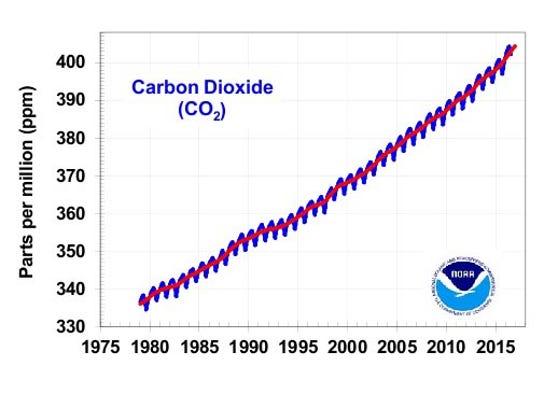Carbon dioxide levels in the earth s atmosphere hits levels not seen for 3 million years at 415 parts per million according to the mauna loa observatory hawaii

Carbon Dioxide Levels in the Earth's Atmosphere Hits Levels not Seen for 3 Million Years

According to the Mauna Loa Observatory in Hawaii, carbon dioxide levels in the Earth’s atmosphere have reached a benchmark not seen for the past 3 million years. The observatory reported that with 415 parts per million, these levels exceeded any recorded concentrations since human beings appeared on this planet.
This alarming milestone provides unequivocal evidence of the ongoing impact of human activities on our climate. The burning of fossil fuels, deforestation, and industrialization have significantly contributed to the increasing concentrations of carbon dioxide in our atmosphere. As a result, we are now experiencing the adverse consequences of an unbalanced ecosystem.
The Mauna Loa Observatory, situated atop a dormant volcano, continuously monitors the Earth’s atmosphere for greenhouse gas concentrations. Scientists have used this data to create a comprehensive record of carbon dioxide levels dating back to 1958. The observatory’s measurements have been instrumental in shaping our understanding of climate change.
To comprehend the significance of a carbon dioxide concentration of 415 parts per million, we must look back in time. Three million years ago, the Earth’s climate was drastically different than it is today. During the Pliocene era, the planet experienced warmer temperatures and sea levels were approximately 50 feet higher than they are today. This heightened carbon dioxide concentration brings us closer to that era.
The impact of rising carbon dioxide levels on our climate is undeniable. Increased concentrations of this greenhouse gas trap heat in the atmosphere, leading to global warming. This, in turn, leads to a myriad of consequences such as melting ice caps, rising sea levels, extreme weather events, and the disruption of ecosystems.
Scientists and policymakers alike have been sounding the alarm about the urgent need to reduce greenhouse gas emissions and transition to renewable energy sources. The 2015 Paris Agreement, which aims to limit global temperature rise to well below 2 degrees Celsius, has been a crucial step in addressing climate change. However, the current trajectory of carbon dioxide levels in the atmosphere demands even more urgent action.
The daunting challenge that lies ahead requires a collective effort from individuals, governments, and industries. It is imperative that we accelerate the transition to a low-carbon economy, invest in renewable energy technologies, and adopt sustainable practices. By doing so, we can mitigate the worst impacts of climate change and create a more sustainable future for generations to come.
Sources:
Tags
Share
Related Posts
Quick Links
Legal Stuff

